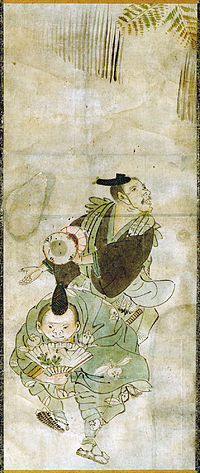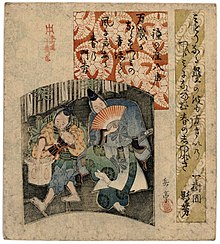
Manzai ( 漫才 ) is a traditional style of comedy in Japanese culture comparable to double act comedy. [1]
Contents
- History
- Etymology
- Boke and tsukkomi
- Notable manzai acts
- Winners of M-1 Grand Prix
- Asahi Shimbun web survey 2012
- Literary associations
- See also
- References
- External links
Manzai usually involves two performers (manzaishi)—a straight man ( tsukkomi ) and a funny man ( boke )—trading jokes at great speed. Most of the jokes revolve around mutual misunderstandings, double-talk, puns and other verbal gags.
In recent times, manzai has often been associated with the Osaka region, and manzai comedians often speak in the Kansai dialect during their acts.
In 1933, Yoshimoto Kogyo, a large entertainment conglomerate based in Osaka, introduced Osaka-style manzai to Tokyo audiences and coined the term "漫才" (one of several ways of writing the word manzai in Japanese; see § Etymology below). In 2015, Matayoshi Naoki's manzai novel, Spark (火花), won the Akutagawa Prize. [2] A mini-series adaptation was released on Netflix in 2016.



